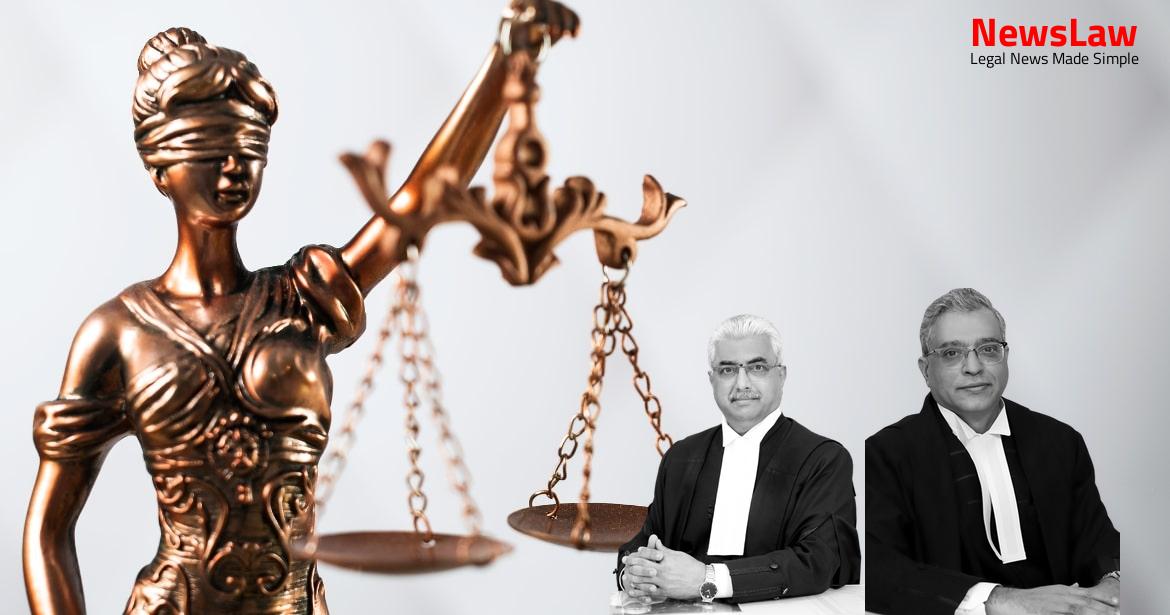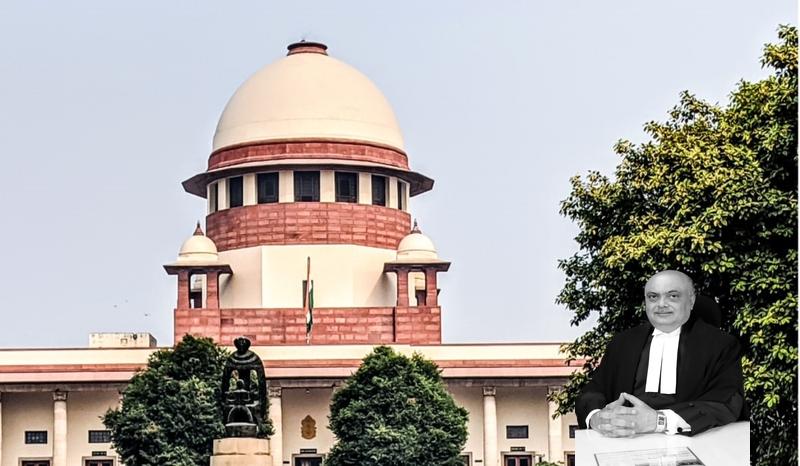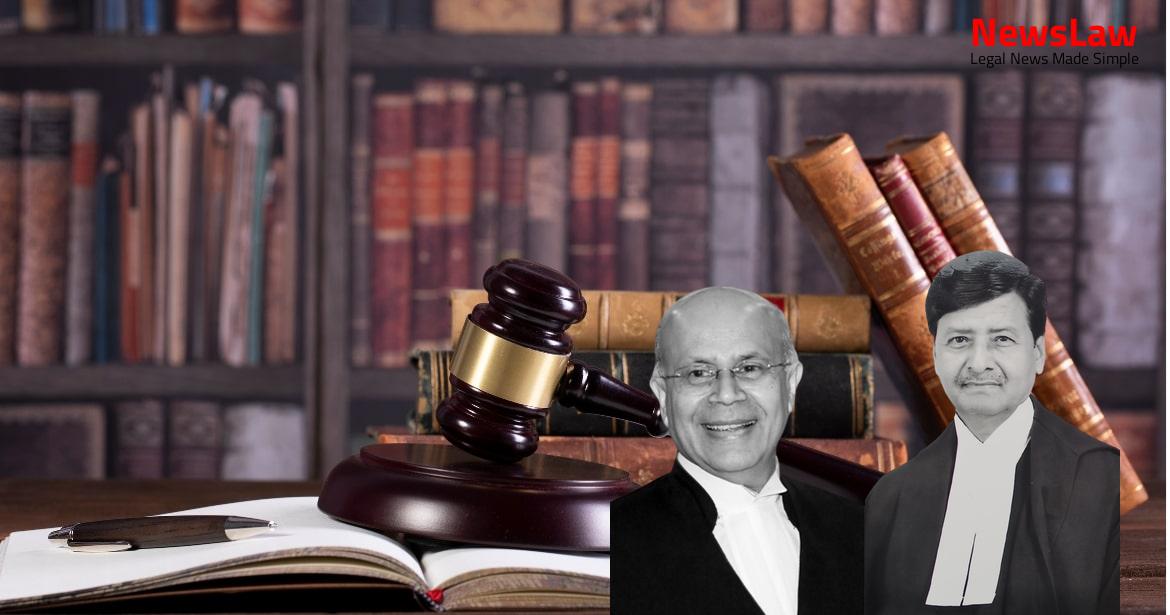In the case of Arvind Singh vs. College Romance, the debate on obscenity in web-series comes to light. Arvind Singh, the petitioner, raised concerns regarding the alleged vulgar content in the web-series ‘Happily F****d Up,’ leading to a legal battle challenging Section 67 and 67A of the IT Act. The respondent, including actors, casting director, script writers, and the media company behind the controversial web-series, defended the artistic expression and freedom of speech. Let’s delve into the complexities of this legal dispute.
Facts
- Respondent no. 2 filed a complaint before the Assistant Commissioner of Police regarding the web-series ‘Happily F****d Up’.
- The complaint alleged vulgar and obscene language in the web-series, constituting offenses under various sections of the Indian Penal Code, IT Act, and the Indecent Representation of Women Act.
- An FIR was registered against the appellants under Sections 67 and 67A of the IT Act following the High Court’s direction.
- The appellants, including actors, casting director, script writers, creator of ‘College Romance’ web-series, and the media company hosting the series, filed appeals against the dismissal and directive to register FIR.
- The Investigating Officer’s report stated that no cognizable offense was found, and there was no obscenity in the content.
- Despite this, the ACMM directed the FIR registration citing the language as obscene and appealing to prurient interests.
- The High Court agreed that the appellants should be investigated and prosecuted under Sections 67 and 67A of the IT Act for producing and transmitting obscene material.
- A revision petition modified the directive to register FIR only under Sections 67 and 67A of the IT Act.
- The complainant later sought FIR registration under CrPC before the ACMM.
- The High Court found that the episode in question contained excessive use of profanities and vulgar expletives, along with clear descriptions and references to sexually explicit acts.
- The male protagonist and later the female protagonist used vulgar language and indecent expressions throughout the episode.
- The Court highlighted the need to regulate vulgar language, profanities, and swear words on public platforms and social media to protect impressionable minds like children.
- It was noted that the explicit content of the episode was not suitable for a courtroom setting and went against language decorum.
- The Court ruled that freedom of speech does not protect content that uses offensive language and sexually explicit descriptions, especially when accessible to the public, including children.
- The online content curator and intermediaries were found to be in violation of IT rules by not properly classifying the content as ‘A-rated’ and lacking appropriate warnings for profanity.
- Claiming that the use of such language is the ‘new normal’ was considered a distortion of facts, as it is still not acceptable in many contexts like in the presence of elders, women, children, or at religious places.
- The importance of maintaining linguistic morality and protecting the sanctity and reverence of languages was emphasized by the Court.
- The judgment stressed the need to consider the impact of content based on Indian morality and contemporary standards of civility and morality, especially in terms of the influence on impressionable minds.
Also Read: Industrial Dispute: Workmen Rights Upheld Case
Arguments
- Learned senior counsel argues that the scenes in question do not contain any sexually explicit act or conduct, therefore not meeting the criteria for an offence under Section 67 or 67A of the IT Act.
- The use of profanities and swear words in the alleged portions is argued to only portray the absurdity of the literal meaning of these terms and their common usage in language.
- Vulgarity, as depicted in the scenes, is distinguished from obscenity based on legal precedents.
- The consumer’s choice in pull media allows for more control over viewing content, supporting the argument that a higher threshold of obscenity should apply in this context.
- The intention of Section 67 of the IT Act, which criminalizes obscene material, is discussed in relation to the alleged scenes from the web-series.
- The portrayed use of expletives is defended as part of common parlance and not intended to be taken literally to convey sexual acts.
- The community standard test is emphasized as a determinant of obscenity, considering the work as a whole and the specific alleged material within it.
- The scenes are analyzed to not depict sexually explicit conduct, therefore not falling under Section 67A offense.
- The argument for artistic freedom of expression under Article 19(1)(a) is reiterated in the context of the scenes in question.
- A higher threshold of tolerance is proposed for the web-series due to its availability to selective viewers as ‘pull content’.
- The complainant, Mr. Arvind Singh, advocate-in-person, argues that the case is not fit for quashing.
- The alleged content of the web-series falls under Sections 67 and 67A of the IT Act, as well as offends Sections 3 and 4 of the Indecent Representation of Women (Prohibition) Act, 1986.
- The High Court’s failure to consider the above Acts is highlighted.
- The material lacks serious literary, artistic, political, or scientific value.
- The material is not in the larger interest of public good, art, literature, science, and hence the obscenity is not justified.
- The accessibility of the material on the internet to all persons, including children, is emphasized, calling for regulation in the interests of public order, morality, and decency.
Also Read: Jurisdiction and Legal Analysis in Contractual Matters
Analysis
- The Court emphasized the need to maintain linguistic purity, civility, and morality in artistic works.
- The Court applied a three-prong test for obscenity: contemporary community standards, patently offensive sexual conduct, and lack of serious value.
- The Court placed itself in the position of both the author and the potential readers to judge obscenity.
- The Court considered the social purpose and message of the work in determining obscenity.
- The Court highlighted the importance of an objective assessment of the work as a whole.
- Profanity and vulgarity were not equated to obscenity by the Court.
- The Court cautioned that obscenity must have a preponderating social purpose or value to be constitutionally protected.
- The Court discussed the delicate balance between freedom of expression and public decency.
- The Court emphasized the need to consider the impact of the work on society and the community standards.
- The Court detailed the process for objectively judging whether material is obscene, including placing oneself in the position of the author and potential readers.
- High Court analyzed the language in a literal sense rather than considering the context in which expletives were used.
- Court should consider the possible influence on readers of all age groups and the intended message of the creator to determine artistic or literary value.
- Criminalizing content containing profanities and swear words as obscene is not justified.
- The specific complaint was regarding the obscene language used in a web-series episode, but the High Court failed to follow the required judicial process in its conclusion.
- Determination of obscenity must involve a comprehensive assessment of the entire work and the obscene content separately to gauge its potential to deprave and corrupt.
- The provisions of Section 67A of the IT Act do not apply as there was no allegation of sexually explicit acts or conduct in the complaint.
- The High Court’s concern about the availability of the web-series to the youth and its classification for age restriction does not align with the assessment of obscenity.
- The High Court’s focus on profane and vulgar language instead of arousing sexual feelings as a criterion for obscenity is criticized.
- The legal approach adopted by the High Court in analyzing the material for obscenity was flawed as it failed to consider the context, the larger web-series, and the standard of an ordinary viewer.
- The usage of vulgar language in the web-series was not related to sex and did not have any sexual connotation, indicating an error in the High Court’s legal approach to determining obscenity.
- Section 67A of the IT Act deals with punishment for publishing or transmitting material containing sexually explicit act in electronic form
- The High Court did not provide any reasoning on how Section 67A applies to the case in question
- Section 67A excludes material justified for public good, religious purposes, or present in ancient monuments and temples
- Section 292 of the IPC criminalizes the sale, distribution, exhibition, and import/export of obscene material
- The definition of ‘obscenity’ is explored under Section 292 and Section 67; involving lasciviousness, appeal to prurient interest, and tendency to deprave and corrupt individuals
- The method for determining obscenity has been established by the Court in relation to Section 292 of the IPC
- Sexually explicit act or conduct in an artistic or devotional form may not tend to deprave and corrupt a person.
- There could be a connection between Section 67A and Section 67 of the law.
- Some sexually explicit acts may not be considered lascivious or appeal to prurient interests.
Also Read: Legal Analysis in Civil Appeal Case
Decision
- Court must quash an FIR or criminal complaint if allegations do not disclose the commission of any offense
- Court allowed the appeals against the judgment of the High Court in Criminal Miscellaneous Cases
- Set aside the judgment of the High Court and quashed the FIR registered at Police Station Mukherjee Nagar, Delhi
- No offence under Section 67 of the IT Act is made out in the case
Case Title: APOORVA ARORA Vs. STATE (GOVT. OF NCT OF DELHI) (2024 INSC 223)
Case Number: Crl.A. No.-001694-001695 / 2024



